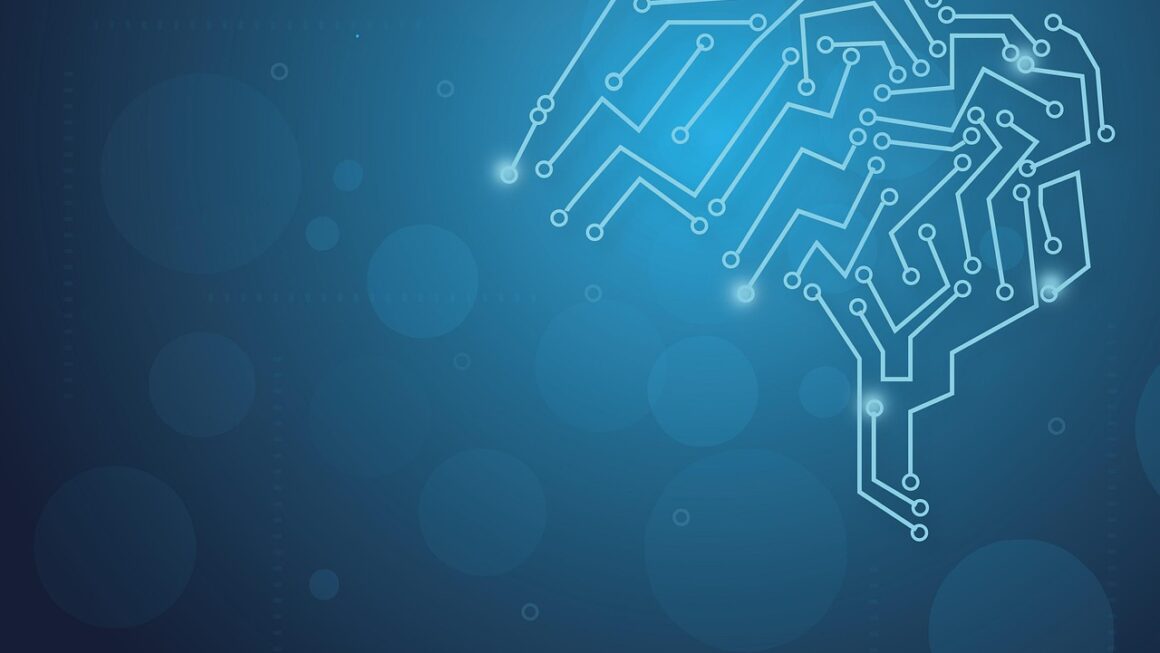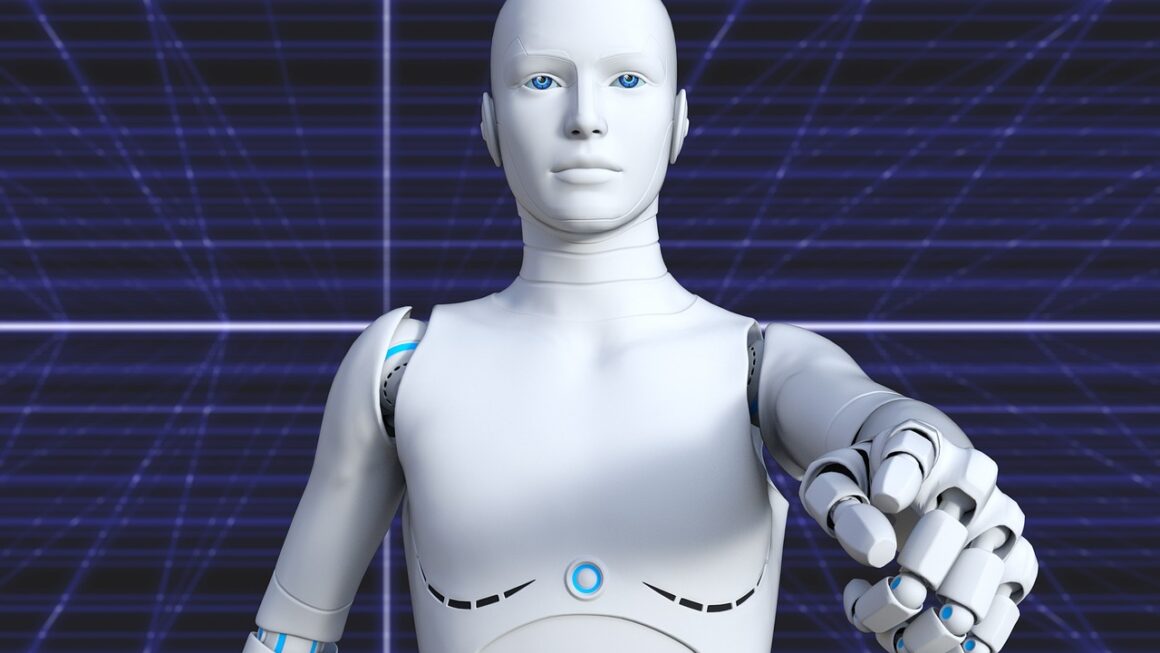Autonomous systems are rapidly transforming industries, from transportation and manufacturing to healthcare and agriculture. These intelligent machines, capable of operating independently without explicit human control, are poised to revolutionize how we live and work. This article delves into the world of autonomous systems, exploring their definition, core components, applications, and future implications.
What are Autonomous Systems?
Autonomous systems are engineered systems that can perform tasks and make decisions independently, without continuous human intervention. They leverage a combination of sensors, software algorithms, and actuators to perceive their environment, reason about it, and act accordingly. This autonomy allows them to adapt to changing conditions and execute complex tasks in dynamic environments.
Defining Autonomy Levels
Autonomy isn’t an all-or-nothing concept. Instead, it exists on a spectrum. The Society of Automotive Engineers (SAE) defines six levels of driving automation, ranging from 0 (no automation) to 5 (full automation).
- Level 0 (No Automation): The human driver performs all driving tasks.
- Level 1 (Driver Assistance): The system provides limited assistance, such as adaptive cruise control or lane keeping assist. The driver must remain alert and ready to take control at any time.
- Level 2 (Partial Automation): The system can perform steering and acceleration/deceleration under certain conditions. The driver must still monitor the environment and be prepared to intervene.
- Level 3 (Conditional Automation): The system can perform all driving tasks under specific conditions (e.g., highway driving) and will alert the driver when intervention is required.
- Level 4 (High Automation): The system can perform all driving tasks under specific conditions and can handle failures or unexpected events within those conditions. The driver may not be required to intervene.
- Level 5 (Full Automation): The system can perform all driving tasks under all conditions that a human driver could.
This model is relevant not only to autonomous vehicles but also to other autonomous systems, providing a framework for understanding the degree of independence exhibited.
Key Components of Autonomous Systems
Understanding the building blocks of autonomous systems is essential to grasp their capabilities. These components work together to enable independent operation.
- Sensors: Provide input about the environment, such as cameras, LiDAR (Light Detection and Ranging), radar, and GPS. These sensors collect data that the system uses to understand its surroundings.
- Perception Algorithms: Process sensor data to create a representation of the environment. This involves object detection, classification, and tracking. Machine learning plays a vital role here.
- Planning Algorithms: Determine the best course of action based on the perceived environment and the system’s goals. This often involves path planning, decision-making, and task scheduling.
- Control Algorithms: Execute the planned actions by controlling the system’s actuators. This involves precise control of motors, robotic arms, or other mechanical components.
- Actuators: Physical components that allow the system to interact with the environment, such as motors, robotic arms, and wheels.
- Computing Platform: The “brain” of the autonomous system, providing the processing power needed to run the algorithms and manage the system’s operations.
Applications of Autonomous Systems
The potential applications of autonomous systems are vast and span numerous industries. They promise increased efficiency, safety, and productivity.
Autonomous Vehicles
Perhaps the most visible application, autonomous vehicles are poised to revolutionize transportation.
- Self-Driving Cars: Aim to provide safe and efficient transportation for individuals and goods. Companies like Tesla, Waymo, and Cruise are at the forefront of this technology.
- Autonomous Trucks: Can improve logistics and reduce transportation costs by operating 24/7 and optimizing routes. Several companies are actively developing autonomous trucking solutions.
- Autonomous Delivery Robots: Offer last-mile delivery solutions for packages and groceries, particularly in urban environments. Starship Technologies and Nuro are examples of companies in this space.
- Example: Waymo’s autonomous ride-hailing service, Waymo One, operates in select cities, providing passengers with driverless transportation.
Autonomous Robotics
Robots equipped with autonomous capabilities are transforming manufacturing, healthcare, and logistics.
- Manufacturing Robots: Perform repetitive tasks, assemble products, and inspect quality, increasing efficiency and reducing errors. These robots can adapt to changing production lines and perform complex tasks with precision.
- Healthcare Robots: Assist surgeons, dispense medication, and provide patient care, improving accuracy and reducing the workload on healthcare professionals.
- Warehouse Robots: Automate tasks such as picking, packing, and sorting, improving order fulfillment speed and accuracy. Companies like Amazon and Ocado heavily rely on warehouse robots.
- Example: Da Vinci surgical robots, used in minimally invasive surgery, provide surgeons with enhanced precision and control.
Autonomous Drones
Drones are becoming increasingly autonomous, enabling a wide range of applications.
- Aerial Photography and Videography: Capture stunning aerial footage for various purposes, from real estate to filmmaking. Autonomous flight modes allow for precise and repeatable shots.
- Inspection and Monitoring: Inspect infrastructure, monitor crops, and survey disaster areas, reducing the need for human intervention in hazardous environments.
- Delivery Services: Deliver packages, medications, and other goods to remote locations or areas with limited access. Companies like Wing (Google’s drone delivery service) are pioneering this technology.
- Example: Drones are used to inspect power lines for damage, reducing the need for human climbers and improving safety.
Autonomous Agriculture
Autonomous systems are revolutionizing farming practices, leading to increased yields and reduced resource consumption.
- Autonomous Tractors: Till fields, plant seeds, and harvest crops with minimal human supervision, improving efficiency and reducing labor costs.
- Crop Monitoring Drones: Monitor crop health, identify pests and diseases, and optimize irrigation, leading to improved yields and reduced waste.
- Robotic Weeders: Identify and remove weeds without the use of herbicides, reducing environmental impact and improving crop quality.
- Example: John Deere is developing autonomous tractors that can operate 24/7, significantly increasing farming efficiency.
Benefits of Autonomous Systems
The adoption of autonomous systems offers numerous benefits across various industries.
- Increased Efficiency: Autonomous systems can operate continuously without breaks, leading to increased productivity and reduced cycle times.
- Improved Safety: Autonomous systems can be programmed to avoid human errors and operate in hazardous environments, reducing accidents and injuries.
- Reduced Costs: Automation can reduce labor costs, minimize waste, and optimize resource utilization, leading to significant cost savings.
- Enhanced Accuracy: Autonomous systems can perform tasks with greater precision and consistency than humans, reducing errors and improving quality.
- Scalability: Autonomous systems can be easily scaled up or down to meet changing demands, providing greater flexibility and responsiveness.
- Access to Dangerous or Inaccessible Locations: Robots and drones can be deployed to inspect or work in environments that are unsafe or too difficult for humans to access.
Challenges and Considerations
Despite the numerous benefits, the deployment of autonomous systems also presents several challenges and considerations.
Ethical Considerations
- Job Displacement: Automation may lead to job losses in certain sectors, requiring retraining and workforce adaptation programs.
- Bias and Fairness: Autonomous systems can perpetuate existing biases if the data used to train them is biased. Ensuring fairness and equity is crucial.
- Accountability and Responsibility: Determining who is responsible in the event of an accident or failure involving an autonomous system is a complex legal and ethical issue.
Technical Challenges
- Reliability and Robustness: Autonomous systems must be reliable and robust enough to handle unexpected events and operate in challenging environments.
- Sensor Limitations: Sensors may have limitations in terms of range, accuracy, and environmental conditions (e.g., rain, fog, darkness).
- Cybersecurity: Autonomous systems are vulnerable to cyberattacks, which could compromise their operation and safety. Robust cybersecurity measures are essential.
Regulatory and Legal Frameworks
- Lack of Clear Regulations: The regulatory landscape for autonomous systems is still evolving, and there is a lack of clear regulations in many areas.
- Liability and Insurance: Determining liability in the event of an accident involving an autonomous system is a complex legal issue.
- Data Privacy: Autonomous systems collect vast amounts of data, raising concerns about data privacy and security.
Future Trends in Autonomous Systems
The field of autonomous systems is rapidly evolving, with several key trends shaping its future.
Increased Use of AI and Machine Learning
AI and machine learning are becoming increasingly integral to autonomous systems, enabling them to learn from data, adapt to changing conditions, and make more complex decisions.
Edge Computing
Moving processing power closer to the source of data (i.e., the edge) allows autonomous systems to make faster decisions and operate more efficiently, especially in situations where network connectivity is limited.
Swarm Robotics
Developing systems that can coordinate the actions of multiple robots working together as a swarm to accomplish complex tasks. Examples include coordinated search and rescue operations or construction projects.
Human-Robot Collaboration
Designing systems that allow humans and robots to work together safely and effectively, leveraging the strengths of both. This includes developing intuitive interfaces and communication methods.
Enhanced Sensor Technologies
Continued advancements in sensor technologies, such as LiDAR, radar, and cameras, are improving the ability of autonomous systems to perceive their environment accurately and reliably.
Conclusion
Autonomous systems are transforming industries and revolutionizing how we interact with technology. From self-driving cars to robotic healthcare assistants, the potential applications are vast. While challenges remain, the benefits in terms of efficiency, safety, and productivity are undeniable. As technology continues to advance and regulations evolve, autonomous systems will play an increasingly prominent role in our lives, offering new possibilities and reshaping the future of work and society. The key takeaway is to stay informed and proactive, considering both the potential and the challenges as we navigate this exciting technological frontier.




